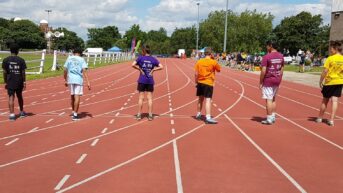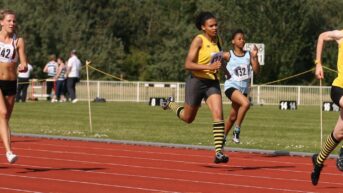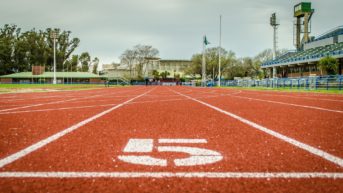
We Value Your Privacy
We use cookies to give you the best online experience, please be aware of our Privacy Policy.

We use cookies to give you the best online experience, please be aware of our Privacy Policy.

As athletics coaches to young athletes we get asked questions from parents about many different things one of the most common is:
Does my child need spikes?
Which spikes should we buy?
With these questions in mind we are going to provide some tips to parents of young athletes about the use of spikes and type you should be buying if you wish to.
Background
Athletics is a late developing sport meaning athletes do not reach their peak or full potential until their early to mid twenties sometimes later in endurance events. So this needs to be considered when deciding to buy your first pair of spikes.
Athletes aged 11 and under or of primary school age
I would strongly recommend not buying a pair of spikes for any young athlete aged 11 or under. There is no real reason for them to need spikes at this age largely due to the lack of competition and their overall development. Wearing a good pair of running trainers will be fine for both training and any competitions.
Athletes aged 11+
As mentioned above athletics is a late developing sport and coaches should promote long term athlete development (LTAD) to all young athletes they coach. This involves young athletes trying a range of events across running, jumping and throwing. This needs to be considered when buying a pair of spikes. To ensure a young athlete can avoid injury it is advised that young athlete uses an all round spike with good support around the heel so that they can take part in a range of running and jumping events.
Sprint spikes are not recommended at a young age as they do not have any support or protection around the heel and ankle which may lead to injuries. Sprint spikes are designed to allow a sprinter to run on the front part of their foot throughout a race or sprint run; many young athletes will struggle to do this due to their physical development and it will result in over use injuries to the heal and ankle.
Experienced athletics coach, sports physio and therapist Mike Whittaker is the physio for the London Lions Basketball Team and has worked with the FA and England Cricket Team said the following:
“Most senior sprinters avoid hard plate sprint spikes to train in regularly as it can cause issues from plantar fasciitis to Achilles’ tendon issues. This is worse on young growing bones and soft tissue.”
Research – does wearing spikes make you faster?
An article from the Journal of Physical Education in 2014 and Sport titled ‘Evaluation of sprinting performance in adolescent athletes with running shoes, spikes and barefoot’ evaluated the sprinting performance of 33 young athletes over a 30m sprint by applying three testing conditions: wearing running shoes, spikes and barefoot.
They concluded the following:
“In summary, the importance of this performance-related study is based on the fact that no differences were found in the finish times of the 30m sprint in the adolescent athletes wearing spikes, running shoes and barefoot. Coaches and athletes should consider the potential and the dynamics of the natural running by using a number of barefoot skills in their training preparation. Future research is needed in order to evaluate if the adaptations of the barefoot training in the developmental age athletes could facilitate the highly competitive performance in world-class sprinters.”
Tip #1 – Decide if your child really needs a pair of spikes?
A good starting point is to decide if your child really needs a pair of spikes. Some simple questions to ask yourself might help. Are they going to compete at all? Are they training regularly and committed to the sport? If the answer is yes then perhaps they need some.
Tip #2 – Choose the right spikes for your child.
It is important to make sure you get the right type of spikes for your child. As discussed the best option for a young athlete is an all-rounder spike such as the ADIDAS ALLROUNDSTAR JUNIOR RUNNING SPIKE which offers an all round spike for running and jumping events. Remember to try on your spikes before buying and they should be a similar fit to your trainers. Brands do differ in size so make sure you get one that fits well.
Tip #3 – Never warm up in spikes.
To help reduce the risk of injury never do your warm up drill or jogging in spikes. Protect yourself as much as possible. Wait until you are completely warmed up before putting on your spikes.
Tip #4 – Limit the use of your spikes.
Try limit the amount of time you use your spikes. You don’t need your spikes for every training session and it is better to train in running trainers. Leave your spikes for competing and high quality sprint sessions.
Tip #5 – Make sure you have the correct size spikes.
Different events and surfaces require a different length of spike inserted in your shoes. The most common is 6mm for a normal athletics track. Outlined below are the different lengths required.
Tartan track: 5mm or 6mm
High Jump/Javelin: 9mm
Grass Track: 6mm
Cross Country: 9mm, 12mm or 15mm
Visit SportsShoes.com and view their range of junior running shoes and spikes.
If you enjoyed this article please share it with friends or others interested in athletics.
*The adverts and links within this page are affiliate links with all commission going towards the cost of running this website.

Part of our tips for parents of young athletes series looking at competitions.

Need to improve your reaction times? Here we show you one way to improve your reactions using just a £1 coin…

Learn the basics of an athletics dynamic warm up.